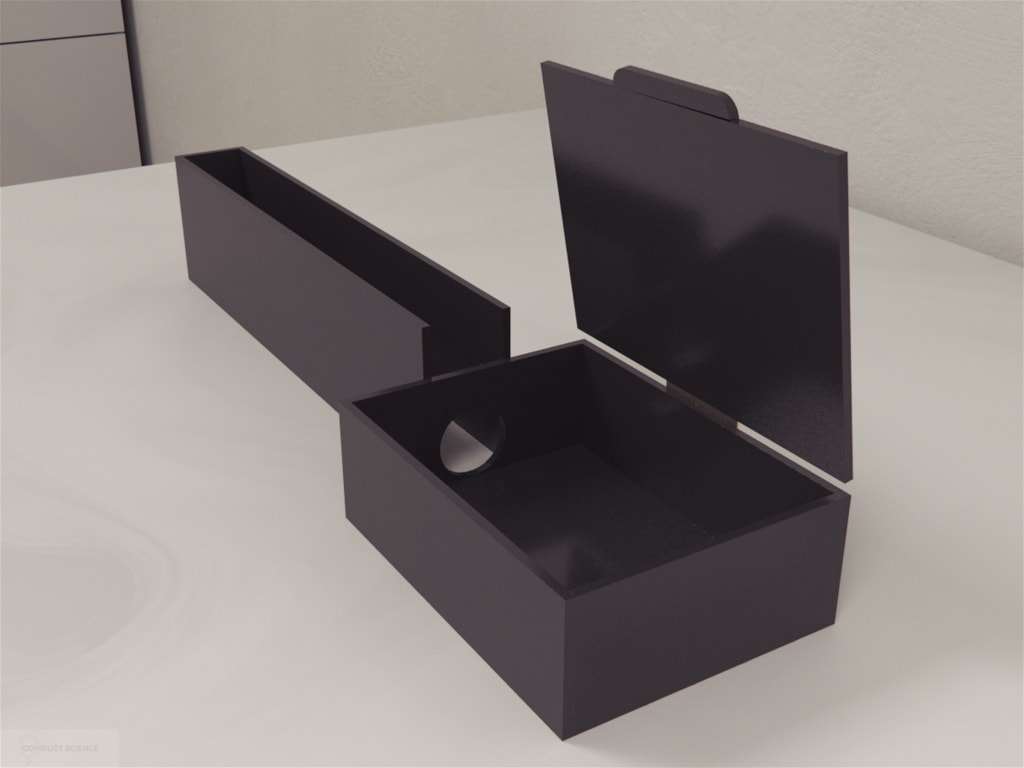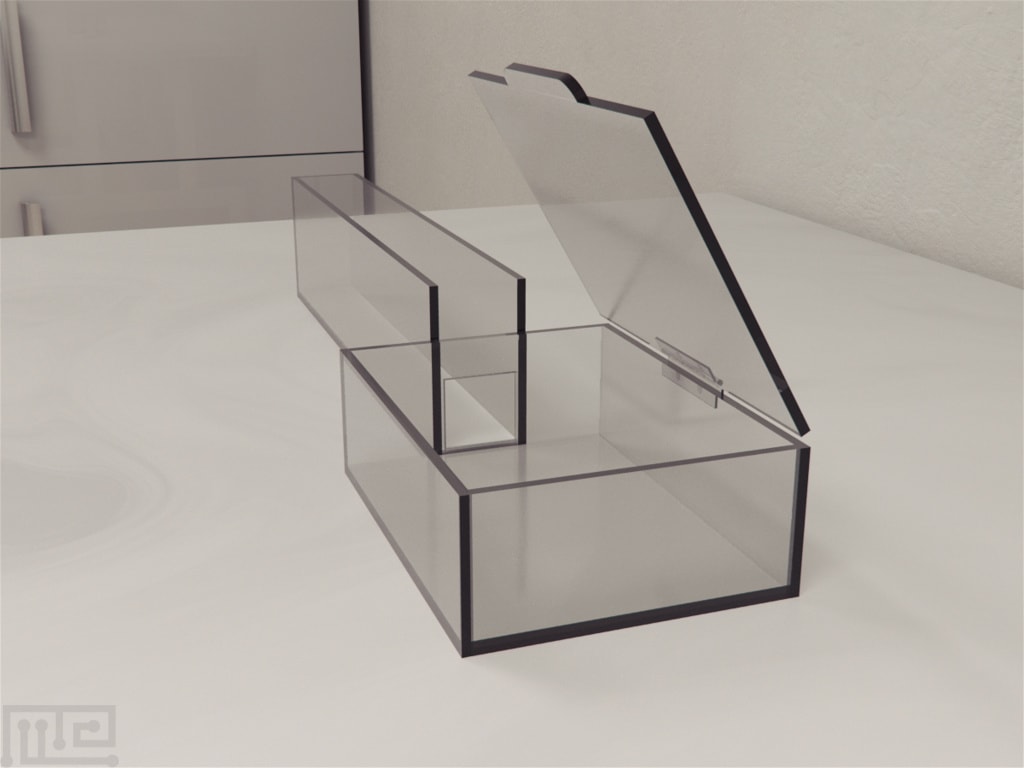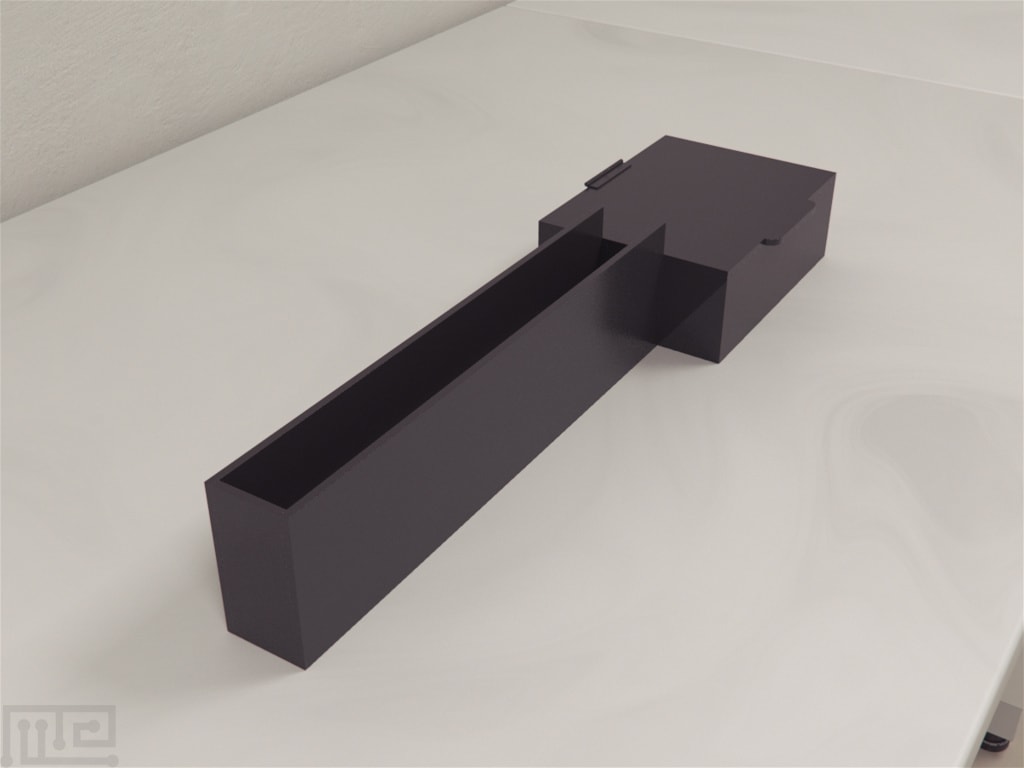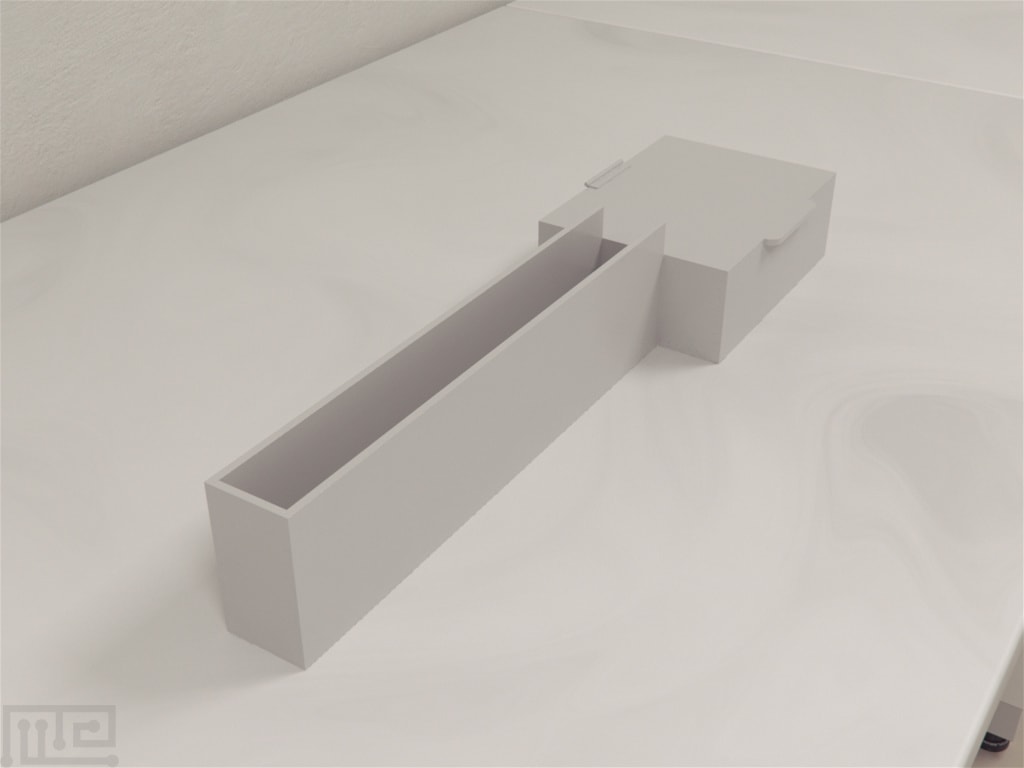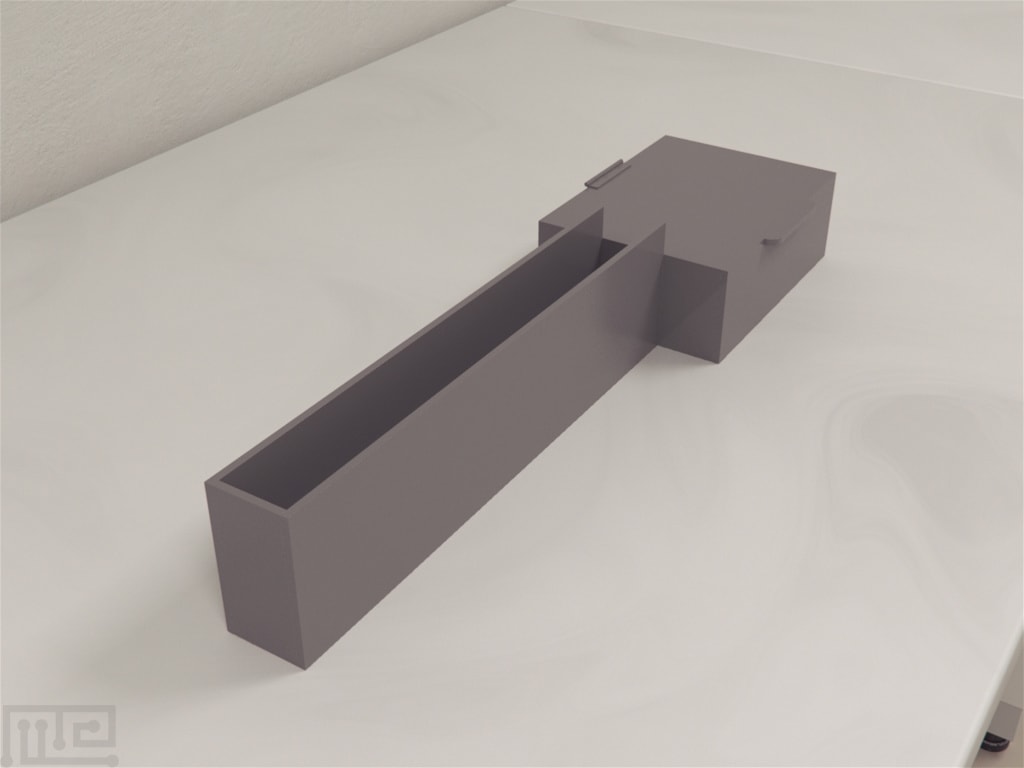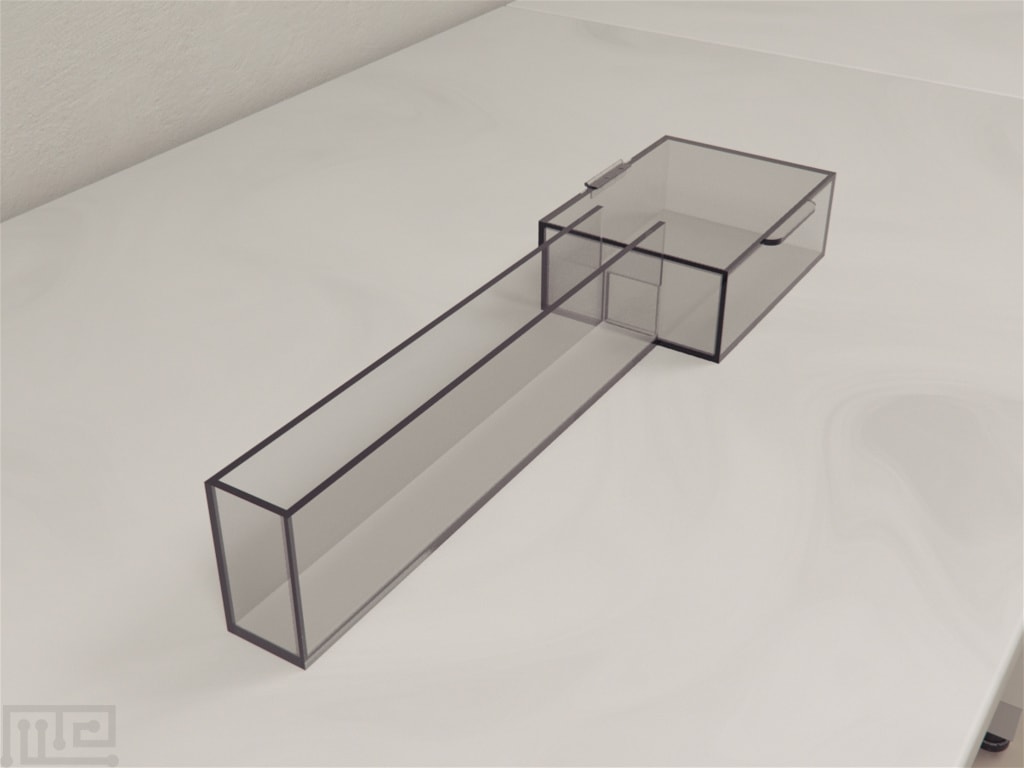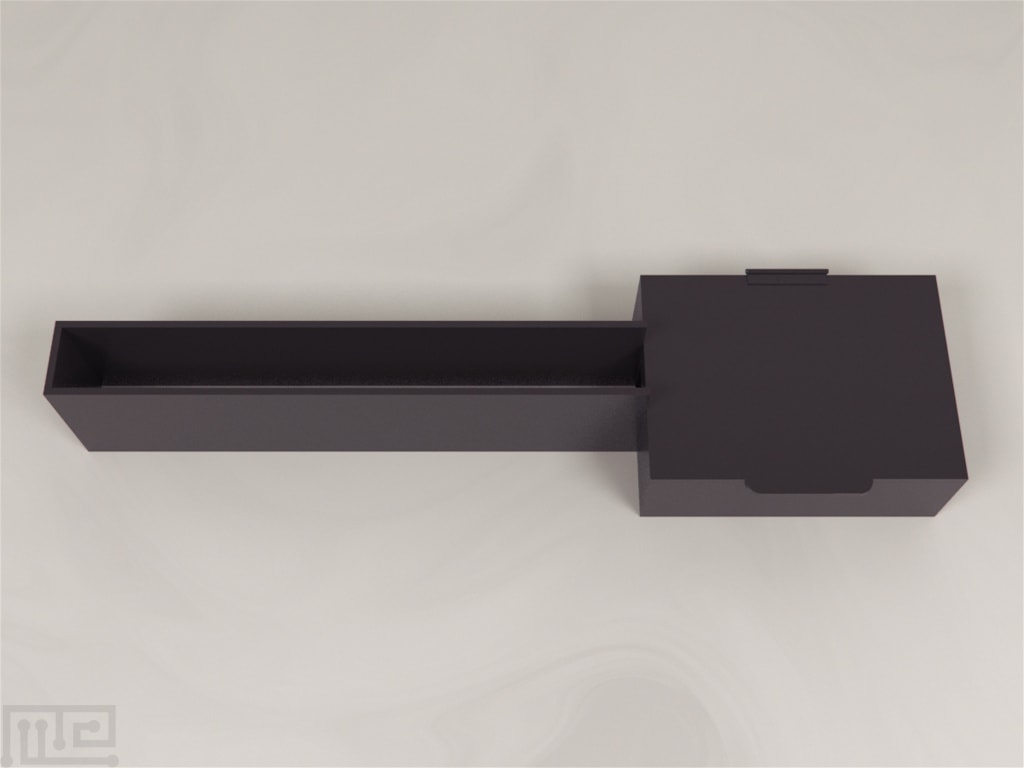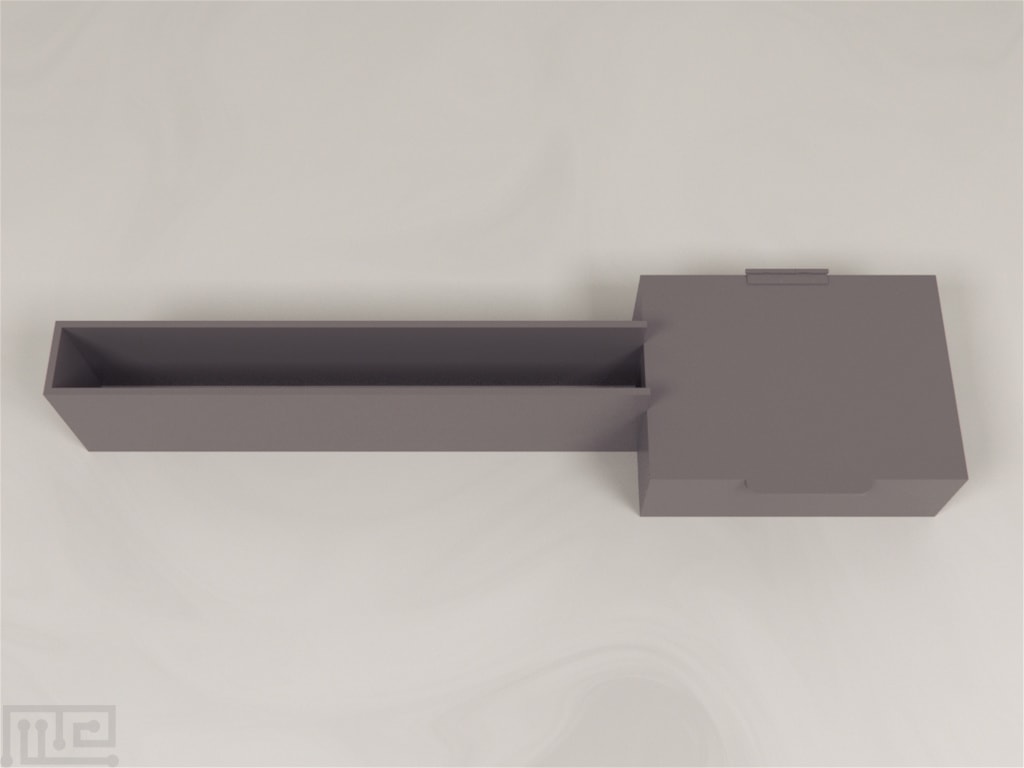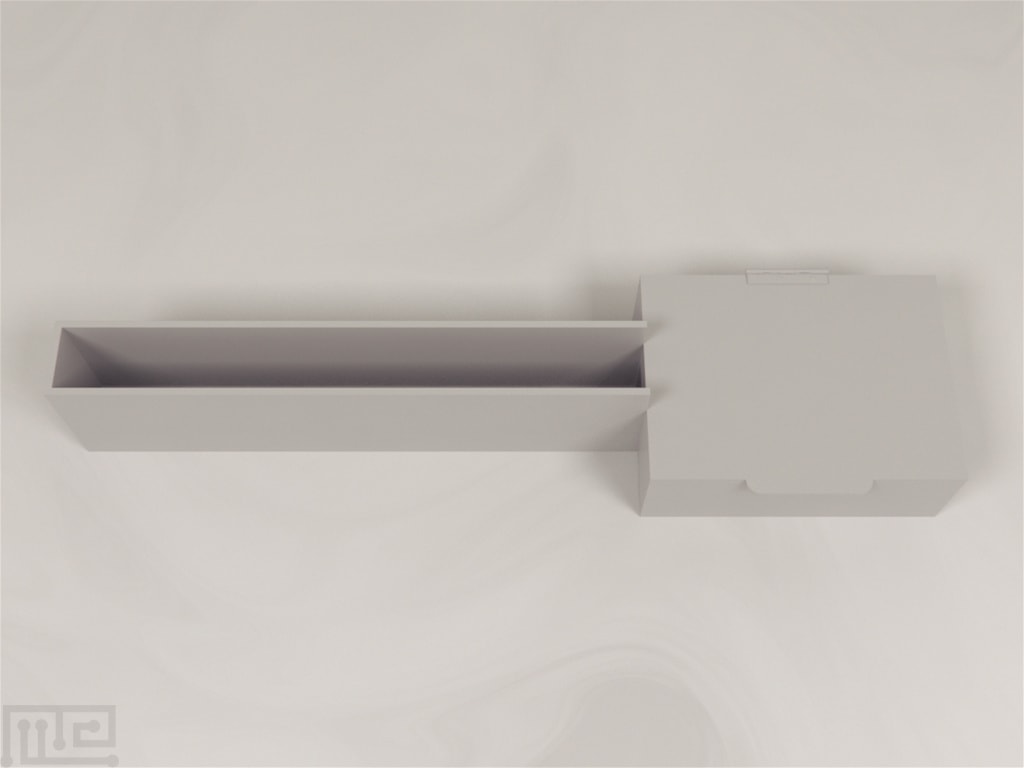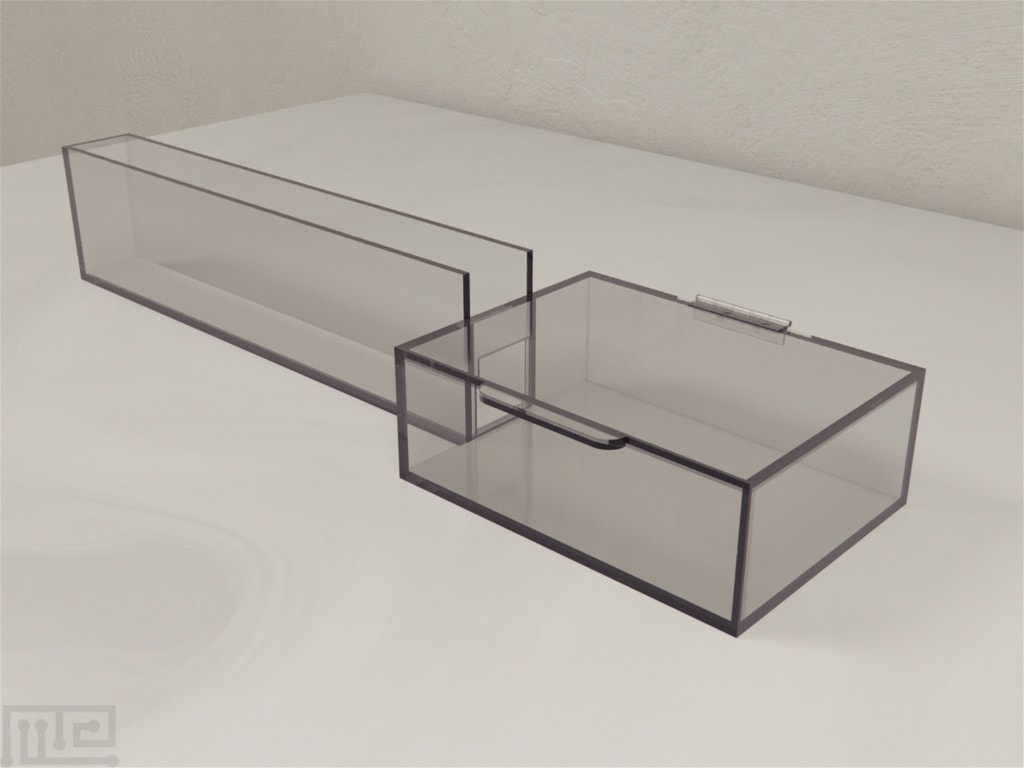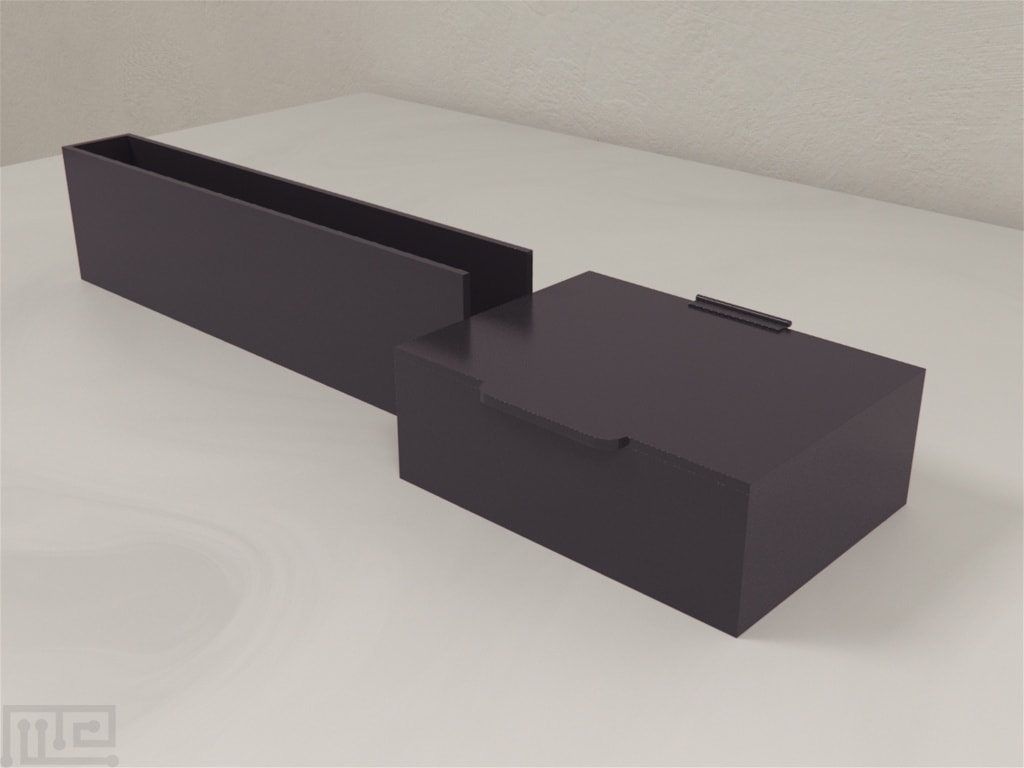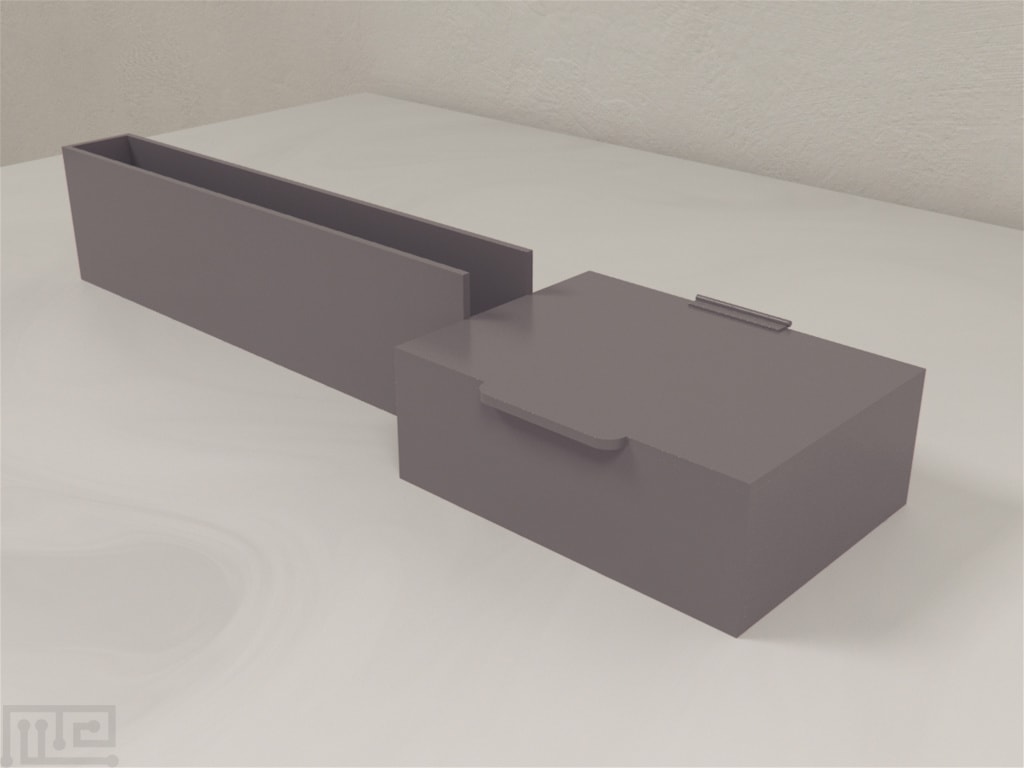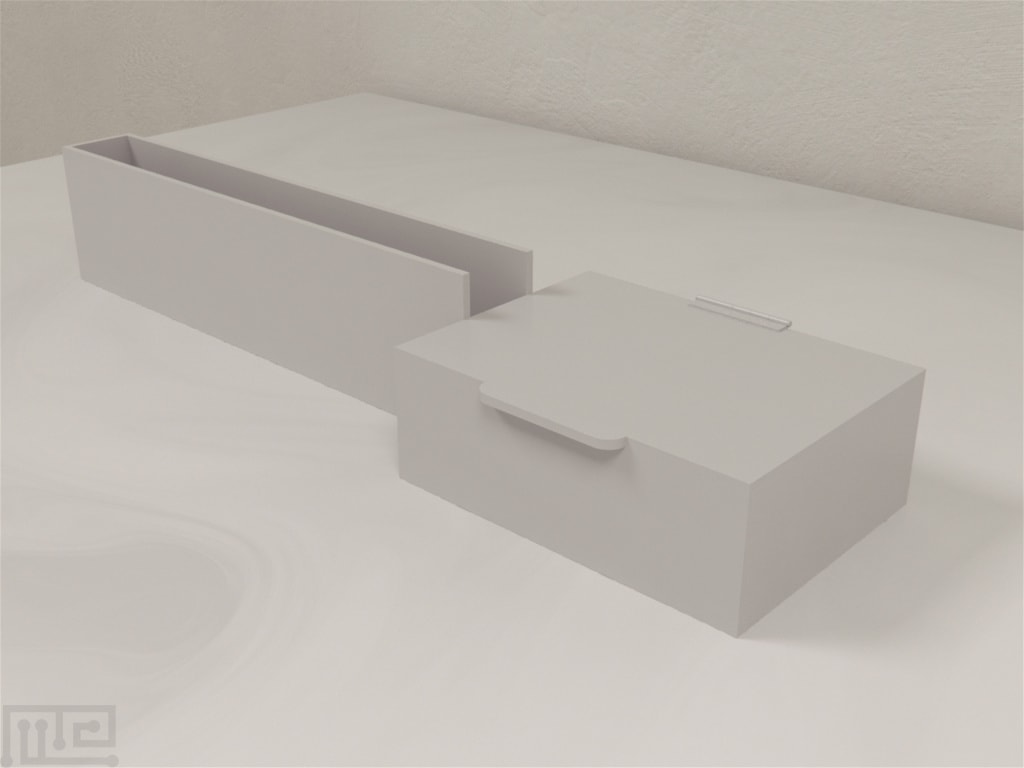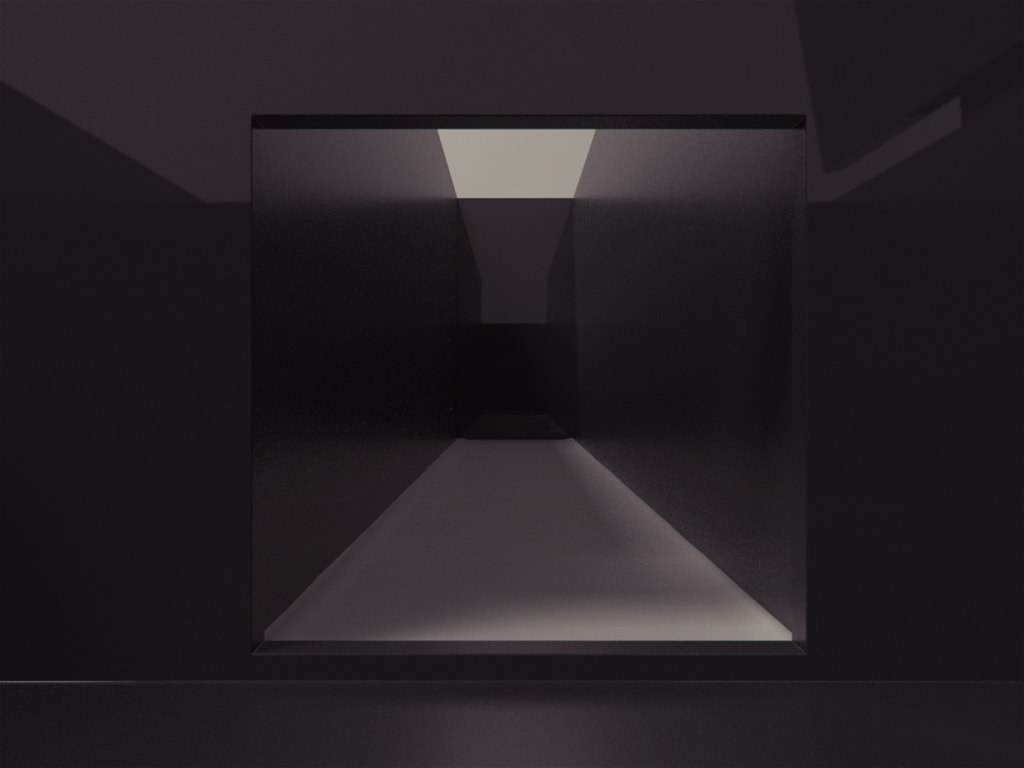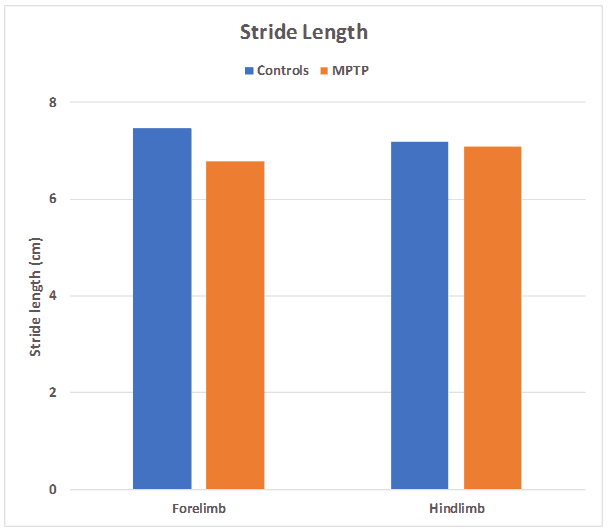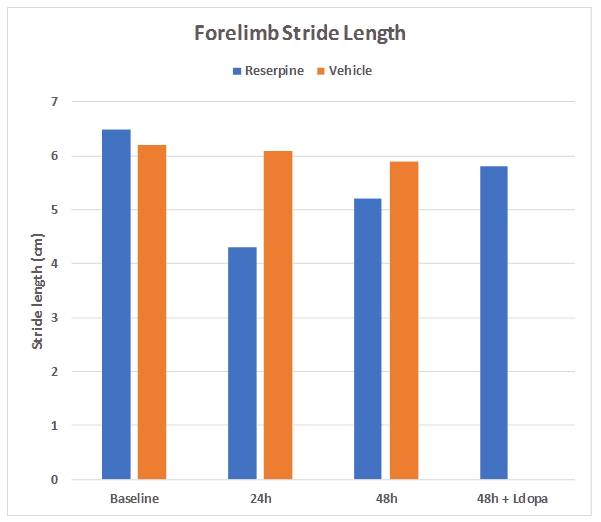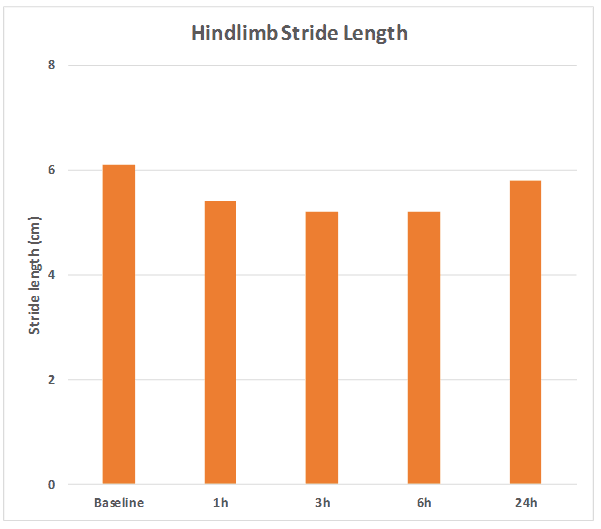The gait test is a useful apparatus to measure motor lesions and other related dysfunction related to gait. The forepaw of the rodent is wetted with blue black ink (included in your order) and placed on one end of the runway, which is covered with a strip of paper. The stride length of forelimbs are measured manually as the distance between two forepaw prints. The MazeEngineers apparatus comes with an optional lighting apparatus to encourage motivation to the dark housing area. Sizing for mice and rats available.
Other apparatuses used in assessing rodent motor function include the Grip Strength test, the Balance Beam, the Parallel Bars, the Catalepsy Bar test, the Static Rods Test, the Parallel Rod test, and the Pole test. See our activity range here.
Price & Dimensions
Mouse
$ 1890
Per Month- Total Size: 60cm x 60cm x 40cm (L x W x H)
- Runway: 40cm x 4.5cm x 9.5cm (L x W x H)
- Housing: 14.5 cm x 20cm x 6.5cm (L x W x H)
- Housing entrance: 4.5cm opening
- Paper lining on the runway: 4.5cm x 40 cm (W x L)
- Blue black ink included
Rat
$ 1990
Per Month- Total Size: 90cm x 90cm x 60cm (L x W x H)
- Runway: 60cm x 6.75cm x 14cm (L x W x H)
- Housing: 22 cm x 30cm x 9.75cm (L x W x H)
- Housing entrance: 6.75cm opening
- Paper lining on the runway: 6.75cm x 60 cm (W x L)
- Blue black ink included
Documentation
Introduction
The Gait test is used in the assessment of stride length and evaluation of gait in rodent models of diseases. Along with other tests such as the Horizontal Grid test and the Vertical Grid test, the Gait test is used in many investigations associated with neuromuscular diseases to understand motor impairments, and in evaluating the effects of pharmacological compounds. The test involves observing the footprints of the subject on the runway to assess the stride length. The test is a simple and reliable task that can be used in indexing basal ganglia dysfunction (Fernagut et al., 2002).
Apparatus and Equipment
The Gait test apparatus includes a runway measuring 40 cm long and 4.5 cm wide. The runway has 9.5 cm high walls along the lengths. At one end of the runway is a black box of dimensions 20 x 14.5 x 6.5 cm, with a 45 mm diameter hole facing the runway. Two halogen bulbs of 50 W each can be used as an aversive stimulus to motivate shelter-seeking behavior. Overall, the dimensions of the apparatus are 60 x 60 x 40 cm.
Training Protocol
The apparatus is lit using the halogen bulbs, and the runway paper is replaced for every trial. The box at the runway serves as the motivation for the task. The box is not illuminated, thus appearing as a safe space for the rodents to hide.
The paws of the subject are wetted with a non-toxic ink (usually blue-black ink), and the subject is placed at the start of the runway facing the box. The experiment ends when the subject has entered the box. During the experiment, if the subject stops or changes direction, no data is recorded for that trial.
Evaluation of the effects of 1-methyl-4-phenyl1,2,3,6-tetrahydropyridine (MPTP)
The subjects are administered 20 mg/kg MPTP dissolved in saline intraperitoneally four times at 2-h intervals. The subjects are then tested on the Gait test apparatus as mentioned earlier. (Kim et al., 2010)
Evaluation of stride length variability after pharmacological pre- and postsynaptic disruption of the nigrostriatal dopaminergic
Subjects are treated with doses of Haloperidol and the drug’s effect on stride length is observed post 1-hour administration and compared to the performance pre-administration.
Another set of subjects are treated with doses of Reserpine and stride lengths before and after administration are compared. Performance of these subjects is also evaluated after 1-hour post Levodopa preceded by Benserazide. (Fernagut et al., 2002).
Modifications
The original version of the dominance test tube is a manually handed apparatus. (G.Lindzey et.al, 1961)
A great number of modifications are made to the test tube. A significant modification is made by Wouter E, van den Berg et.al 2014.
They automated the apparatus. Their apparatus consists of a clear fiberglass tube approx. 50 cm long and 2.5 cm in diameter from inside. The tube is connected to a clear fiberglass box approx. 12 x 8 cm on each side enclosed with clear fiberglass doors. The box can be opened or closed with the aid of a manual lid.
An air valve is present at the rear end of the box approx. 1 cm above the base. Additionally, an opaque fiberglass divider is placed in the center.
The activation of each air valve and the positioning of each door are fully automated and regulated independently in real-time for automated tracking with infrared photo-detectors.
Sample Data
The Gait test is simple, straightforward task that measures the limb’s stride length of the subject by observing the paw prints of the subject on the runway. The first, second, and last paw prints are excluded as the velocity changes during the run. If the subject stops or changes direction, no data is recorded for that trial.
The stride length is measured as the distance between two hind paws’ or between two fore paws’ prints. The apparatus should also be cleaned to avoid unnecessary stimuli from interfering with the performance of the subject.
Strengths & Limitations
Strengths
Gait test is a simple and reliable task that can be used in indexing basal ganglia dysfunction. The test allows assessment of pharmacological manipulations affecting the gait and the stride length of the subjects. The task can also be used in demonstrating gait defects caused by lesions and diseases. It can be extended to reflect motor deficits arising due to age. The black box serves as motivation for the rodents to cross the runway.
Limitations
Repeated trials on the Gait test will cause muscle fatigue in the subjects. Allowing rest periods between each trial is important. Factors such as the age and sex can also affect the performance. Subject’s own emotional and mental status can also influence the results.
Summary and Key Points
- Gait test is used in the assessment of stride length and evaluation of gait.
- The test involves observing the footprints of the subject on the runway to assess the stride length.
- The test is a simple and reliable task that can be used in indexing basal ganglia dysfunction.
- The stride length is measured as the distance between two hind paws’ or between two fore paws’ prints.
- The stride length can be affected by pharmacological manipulations and lesions.
- The black box serves as the motivation for the task.
References
Fernagut PO, Diguet E, Labattu B, Tison F (2002). A simple method to measure stride length as an index of nigrostriatal dysfunction in mice. J Neurosci Methods. 113(2):123-30.
Kim ST, Son HJ, Choi JH, Ji IJ, Hwang O (2010). Vertical grid test and modified horizontal grid test are sensitive methods for evaluating motor dysfunctions in the MPTP mouse model of Parkinson’s disease. Brain Res. 1306:176-83. Doi: 10.1016/j.brainres.2009.09.103.
Kim ST, Son HJ, Choi JH, Ji IJ, Hwang O. Vertical grid test and modified horizontal grid test are sensitive methods for evaluating motor dysfunctions in the MPTP mouse model of Parkinson’s disease. Brain Research 1306 (2010) 176 – 183

